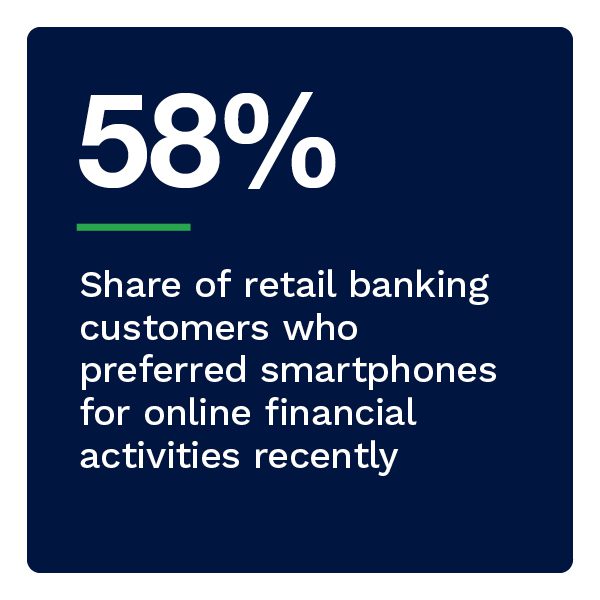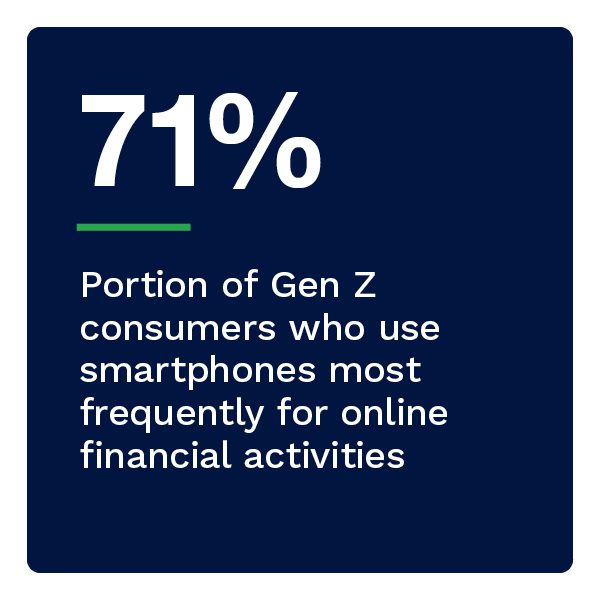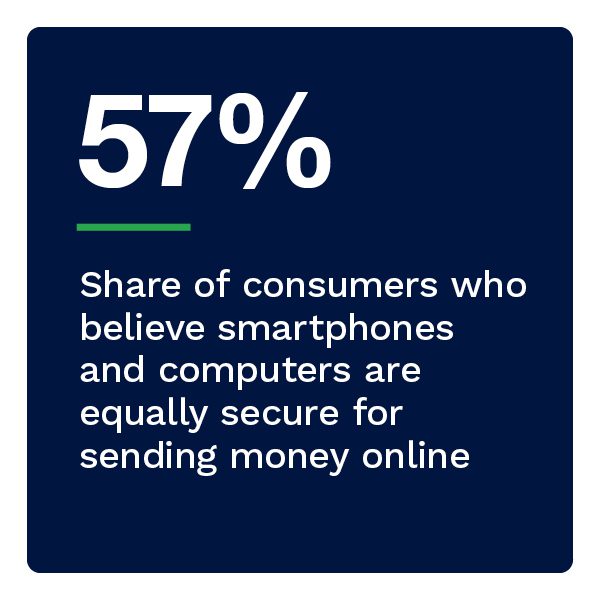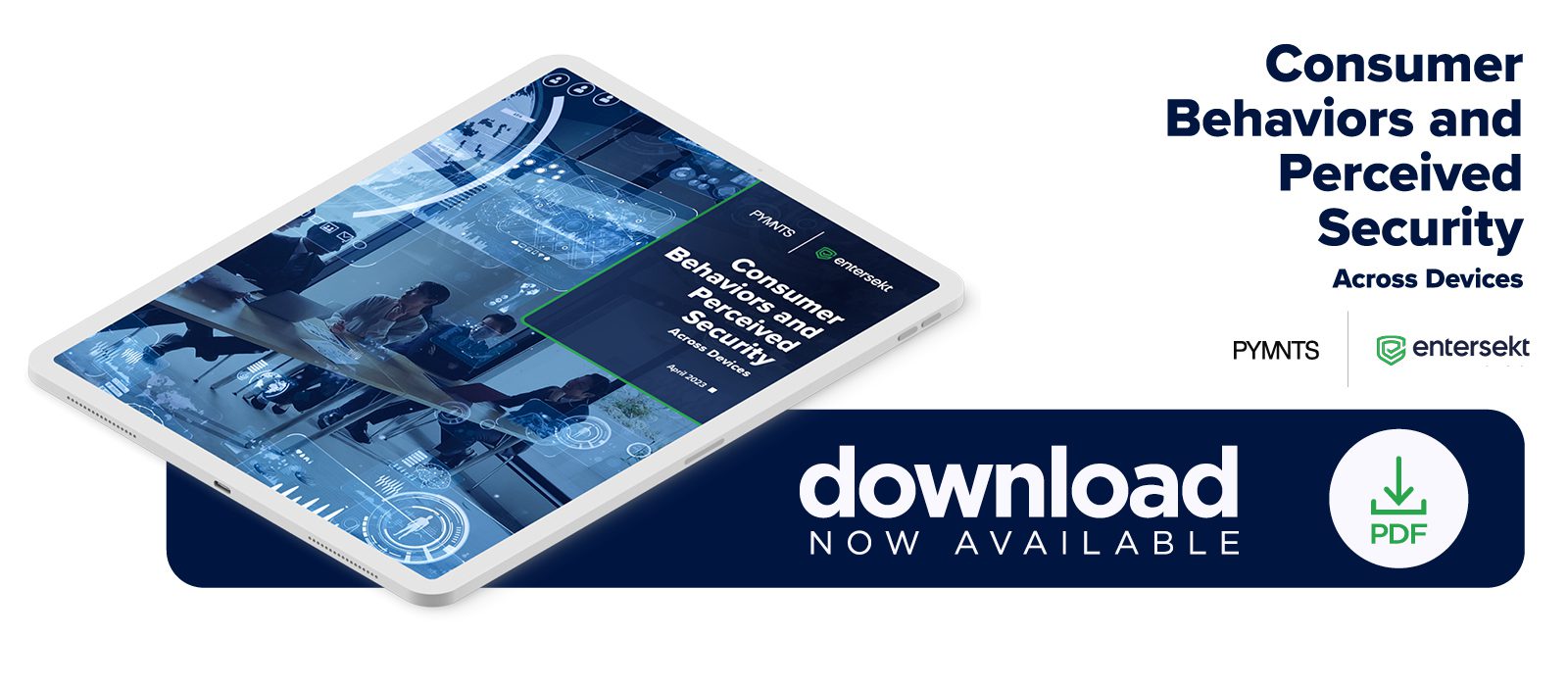Millennials, Gen Z Use Mobile Banking 5x More Than Their Parents
Banks are at a critical juncture in an era of increasing digital threats and a smartphone-centric culture. PYMNTS’ latest research shows that smartphones are already the go-to device for online financial activities for most consumers, particularly younger generations. Couple this shift with consumers’ desire for increased control of safeguarding their financial information, and it is clear that financial institutions’ current approaches to digital financial security and authentication require a reboot.
Financial institutions must prioritize implementing digital security practices and strategies that cater to consumers’ changing preferences regarding their financial information and activities. Adapting to this evolving financial landscape can help FIs maintain digital financial security and improve customer trust while attracting new customers.
For “Consumer Behaviors and Perceived Security Across Devices,” a collaboration with Entersekt, we surveyed 2,584 United States consumers to examine how their device preferences are linked to their perceptions of digital security when conducting online financial activities and transactions.
Key findings from these results include the following:
• A mobile-first mindset directs younger generations’ online financial behavior.
PYMNTS’ latest research shows that across all age groups other than baby boomers and seniors, banking customers increasingly favor using their smartphones  to conduct online financial activities and transactions by wide margins. While 58% of retail banking customers reported smartphones as their go-to devices for online financial activities, millennials were 18% more likely and Generation Z consumers were 23% more likely to say their phones were their preferred devices.
to conduct online financial activities and transactions by wide margins. While 58% of retail banking customers reported smartphones as their go-to devices for online financial activities, millennials were 18% more likely and Generation Z consumers were 23% more likely to say their phones were their preferred devices.
• Most consumers see smartphones and computers as equally secure for online financial transactions — but we uncovered interesting trends based on the type of activity.
Fifty-seven percent of consumers believe smartphones and computers are equally secure for sending and receiving money, and 56% said the same for accessing bank accounts. Slightly larger shares of consumers consider smartphones more secure than computers for sending and receiving money and for making online purchases. The opposite is true for accessing bank accounts and paying bills, rent or loan payments. We dig further into these trends, including what share of consumers use their phones for select activities, even when they say computers are more secure overall.
 • Trust alone is insufficient: Banking customers demanding more control over their digital financial security want routine verification and MFA options.
• Trust alone is insufficient: Banking customers demanding more control over their digital financial security want routine verification and MFA options.
Banks and other FIs must take consumers’ desire to be actively involved in the authentication process seriously. To minimize the risk of fraud, 83% of banking consumers want multifactor authentication (MFA) for higher-risk and infrequent activities, and 62% want MFA for routine transactions. In addition, 42% of banking customers want to authenticate their identity each time they access their bank account, and 47% said the same for sending money to and receiving it from family and friends.
These are just a few of the patterns and trends we uncovered. Download the playbook to learn more about consumers’ authentication and device preferences in completing online financial activities.
